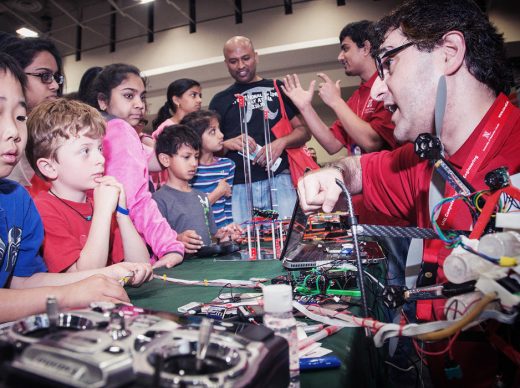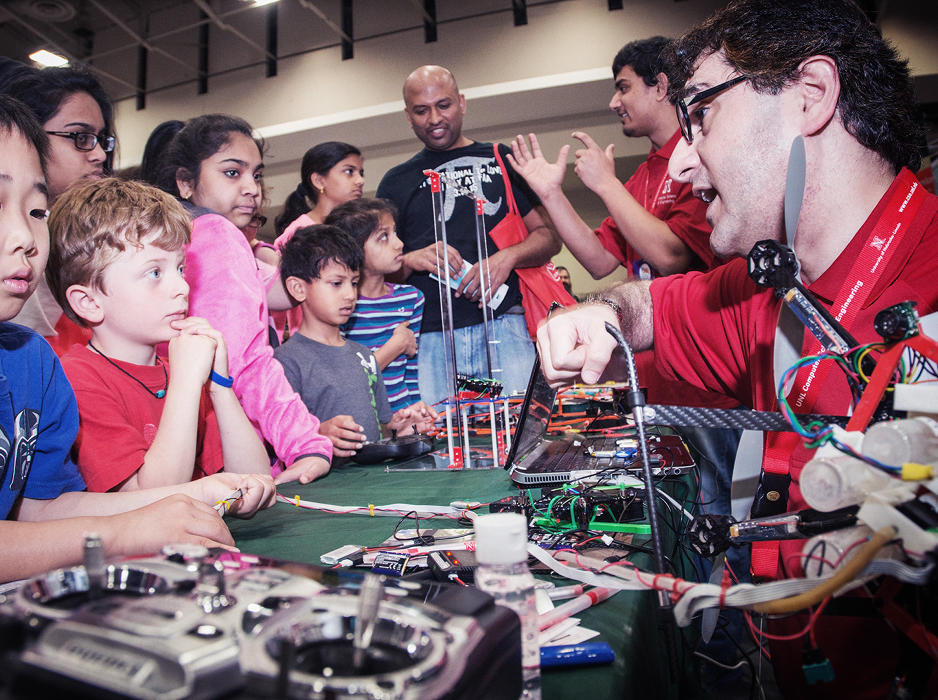Beyond Awareness Campaigns: Innovative Approaches To Close The Tech Gender Gap
The leadership team at Computing Technology Industry Association (CompTIA) was well aware of data illustrating the gender gap in tech employment. According to their data, more than 5.1 million people worked in core technology jobs in the U.S. at the end of 2015, but just 25% of those jobs were held by women. But the heads of the nonprofit simply had to look around its industry events to see the anecdotal evidence, too. Most of the attendees were men.
“We wanted to take a closer look at what some of the reasons were for that,” says Carolyn April, CompTIA’s senior director of industry analysis. So, the organization commissioned research to look at why young girls are not choosing science, technology, engineering, and mathematics (STEM) education and careers.
Why She Shies Away From STEM
The findings provided some insight into several critical factors behind why girls “opt out” of tech at between the ages of 10 and 17:
Exposure. Boys are more likely than girls to be introduced to technology at an earlier age. Eleven percent of boys began using devices at age 5 or younger, versus 5% of girls.
Awareness. Nearly half of boys have considered a technology career verses less than one-quarter of girls. Of girls who have not considered an IT career, 69% attribute this to not knowing what opportunities are available to them. More than half (53% ) say additional information about career options would encourage them to consider a job in IT.
Role models. In general, just 37% of girls who responded knew of someone with an IT job. But 60% of girls who considered an IT career knew a woman who worked in IT. Relying on more classes isn’t enough—girls who have taken tech classes are only slightly more likely to consider an IT career.
These findings formed the basis for CompTIA’s new awareness campaign, Make Tech Her Story, which features components such as a website and e-book that the organization hopes will “inspire tech industry leaders, educators, parents and, most importantly, girls to make the industry more gender inclusive.”
While knowledge about why girls are choosing careers other than STEM can help pave the way for change, do we really need another awareness campaign about the gender gap?
School Days Solutions
It’s not a bad idea, but efforts need to go beyond awareness, says Jeanne Meister, a partner at workplace consultancy Future Workplace and author of The Future Workplace Experience: 10 Rules for Mastering Disruption in Recruiting and Engaging Employees. And efforts to engage them in these paths need to start earlier.
“What’s really shocking is that their consideration of an IT career decreases the older they get,” Meister points out. “That says to me, that they have intellectual curiosity about technology, but it’s beaten out of them between grammar school, and by time they get to high school,” she says.
Change needs to start from young girls’ early years through parental encouragement and even in their toys, Meister says. Relatively new market entrants like GoldieBlox and Project MC2 encourage interest in science and building things, and are targeted to appeal to girls as young as 4 or 5 years old. That gives girls an early awareness of the possibilities their future may hold, Meister says.
By providing a focused, intensive environment, the American Museum of Natural History’s (AMNH) Brown Scholars program teaches young women about the intersection of computer science and science. Fast Company previously reported on the three-year, tuition-free program open to 9th and 10th grade girls, that’s funded by the Helen Gurley Brown Trust. The program includes a paid internship and college and career exploration components. Field trips may take them from the computer science functions at Hearst Publishing or to those at a hot new startup.
But beyond introducing the young women to role models, which has been shown to be critically important, and showing them pathways to achieve their goals, there’s another essential component: Community. Christina Wallace, the vice president at Bionic, an IT company focused on generating growth in large companies, founded BridgeUp: STEM, the educational initiative at the AMNH of which Brown Scholars is a part. Wallace is also a member of the TheLi.st, an online community of women in technology devoted to changing the ratio in the tech sector.
Wallace says that many girls come in to the program because of their interest—they may have heard of it or seen a relative or friend work in the field. But what keeps them around is having a community of other young women who are also interested in the same field, she says.
“Once they’d get there and they meet all of the other girls—that’s what keeps them around and what really is that ‘sticky’ thing,” she observes. “We’ve had 100% retention through the three years of the program. They now have a cohort of girls like them. They’ve got that community across all of these different schools in the city, and neighborhoods, and backgrounds, and interests,” she says.
Snagging The Older Set
And some are focusing on recapturing potential STEM candidates at later stages of the game. Northeastern University is tackling the issue by creating the ALIGN program, which focuses on undergraduates and women who have completed their bachelor’s degrees, but didn’t study computer science. Piloted on the university’s Seattle campus four years ago, the first small class of eight students graduated in 2016. Alumni landed jobs at Amazon, Facebook, Staples, and Porch.
In addition, the university is expanding its co-op program—undergraduate students do two to three co-ops while Masters-level computer science students do a six- to eight-month co-op—so that students in more majors get co-op experience in computer science. Northeastern is also expanding its dual majors and “meaningful minors” for computer science majors, which give more students the opportunity to study computer science along with other areas of interest, says Carla E. Brodley, professor and dean of Northeastern’s College of Computer and Information Science. One of the reasons she’s so excited about such opportunities is that it shows students, especially women and underrepresented groups, that there are many ways to use their interests in addition to computer science to follow varied career paths.
“[T]here’s a lot of awareness that we need to get girls interested in STEM. But I think, ‘What about all the people who graduated before? It’s not too late for them, either,’” she says.
Of course, awareness campaigns can inspire change. As a large industry group. CompTIA has various programs that conduct outreach to and on behalf of the industry. April hopes that this research will influence the organization’s membership and industry leaders to take action to encourage more young women to opt in to STEM education and careers.
related video: Sallie Krawcheck On The Benefits Of Investing In Women
Fast Company , Read Full Story
(46)














